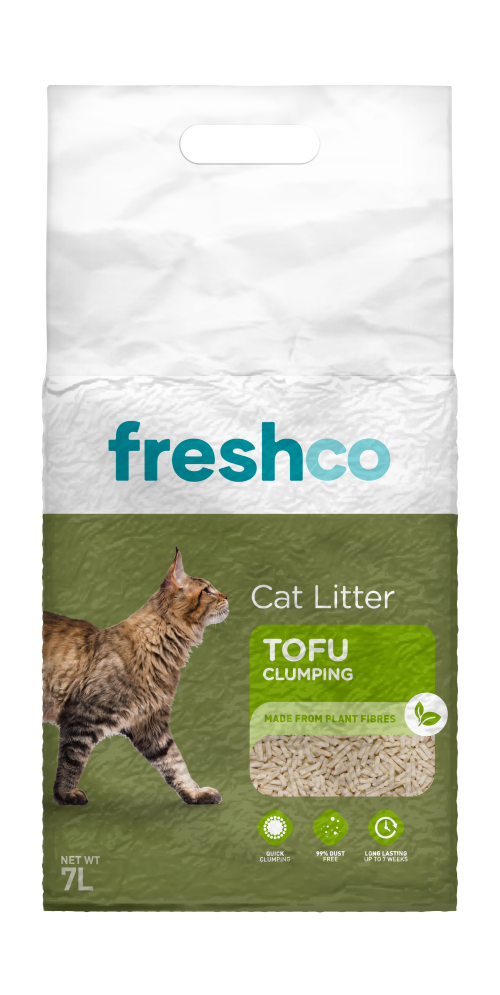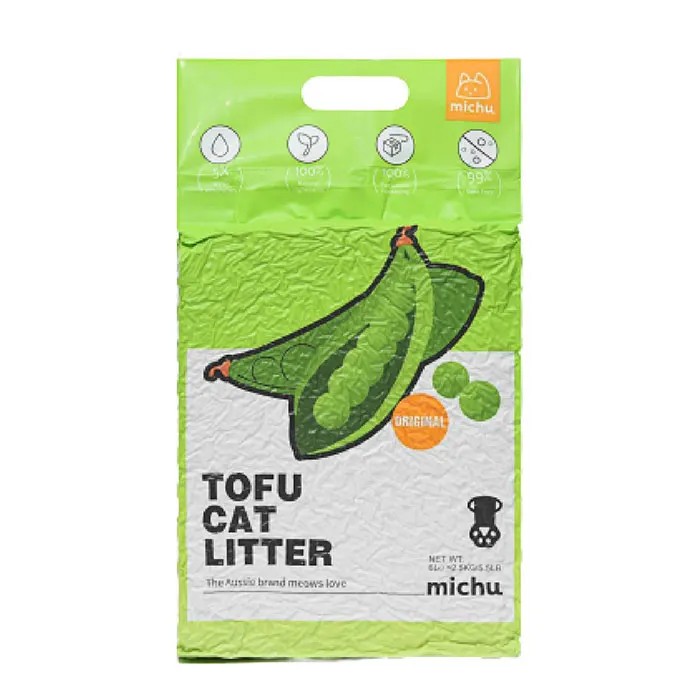One of the essential aspects of cat care is choosing the right litter for your kitty’s litter box. But with so many options available, how do you know which one is best for your cat and your home?

In this article, we will explore the different types of cat litter, their pros and cons, and how to find the best one for your specific needs.
Table of Contents
- Clumping vs non-clumping cat litter
- Cat litter features and benefits
- Types of cat litter
- What is the best cat litter?
- Cat litter FAQs
New to litter and not sure what types of litter you or your cat like? Take our Cat Litter Finder quiz to get some recommendations.

Is clumping or non-clumping litter better?
The choice between clumping and non-clumping cat litter depends on your personal preference, budget, and lifestyle. Some cats may also prefer one over the other, so you may need to experiment with different brands and types until you find the one your cat likes best.
Clumping litter
Clumping cat litter forms solid clumps when it comes into contact with moisture, making it easy to scoop out the waste and keep the rest of the litter clean.
Pros and cons of clumping litter
The main advantages of clumping cat litter:
- It reduces odour by trapping the urine and faeces in clumps
- It lasts longer and requires less frequent changing
- It is more economical and less wasteful
The main disadvantage of clumping cat litter is some clumping cat litters, like clay-based litter, can be dusty and track around the house
Non-clumping litter
Non-clumping cat litter absorbs moisture but does not form clumps, so you need to replace the entire tray of cat litter more often.
Pros and cons of non-clumping litter
The main advantages of non-clumping cat litter are that it’s:
- Usually cheaper
- Low tracking
- More absorbent
- Lightweight
The main disadvantages of non-clumping cat litter are:
- The entire tray needs to be changed more often and generates more waste
- It can be messy and hard to clean
Other cat litter features to consider
Low tracking
Some cat litters are designed to minimise the amount of litter that gets stuck to your cat’s paws and spread around the house. This can help keep your home cleaner and reduce the risk of your cat ingesting the litter.
Biodegradable /eco-friendly
Some cat litters are designed to be biodegradable or eco-friendly, meaning that they can be composted or disposed of in an environmentally responsible way. This can help you reduce your carbon footprint and support the sustainability of the planet.
Odour neutralising
These litters neutralise or eliminate the odour of your cat’s waste, making your litter box more pleasant and less smelly. This can help you improve the air quality and comfort of your home, as well as reduce the risk of your cat rejecting the litter box due to a bad smell.
Health-monitoring
Health-monitoring cat litters are designed to monitor your cat’s health by changing colour or indicating the pH level of your cat’s urine. This can help you detect early signs of urinary tract infections, kidney problems, diabetes, or other issues that may affect your cat’s well-being.
Scented
Scented cat litters have an added fragrance to help mask unpleasant litter tray odours. They will help keep your house smelling fresh and clean and are great for multi-cat households.
Unscented
If you or your cat are sensitive to fragrances, unscented cat litter might be better for you. These litters don’t have any added fragrances but still neutralise odours through natural odour control elements like charcoal or baking soda.
Highly absorbent
Highly absorbent cat litters are efficient at absorbing urine. The more liquid each piece of litter can absorb, the longer a bag of litter will last.

What is the best cat litter substrate?
Another factor to consider is the material or substrate of the cat litter. There are many different substrates available, each with their own characteristics and benefits. Your cat will have a preference of their own, and it might take a bit of trial and error to figure out what they prefer.
Don’t be afraid to experiment with different types of cat litter. With Petbarn’s Litter Lover’s Guarantee, if your cat doesn’t love their litter, we’ll replace it (T&Cs apply)!

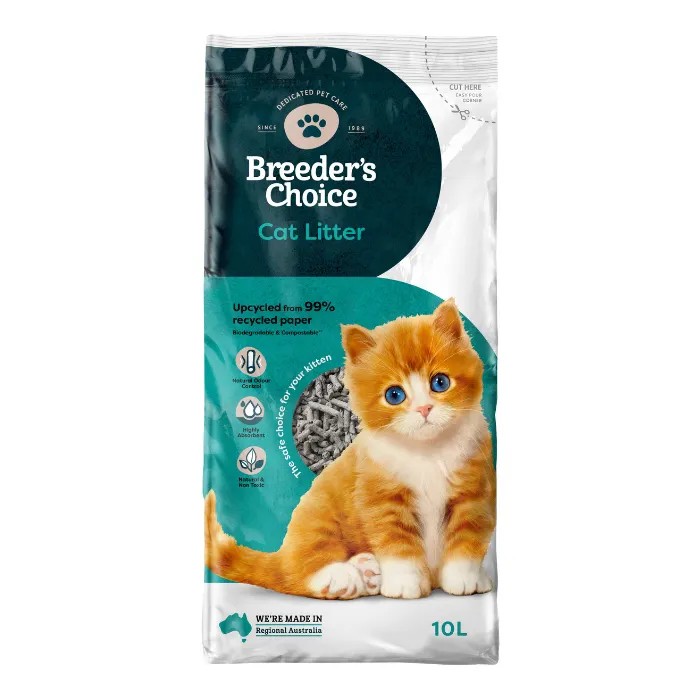
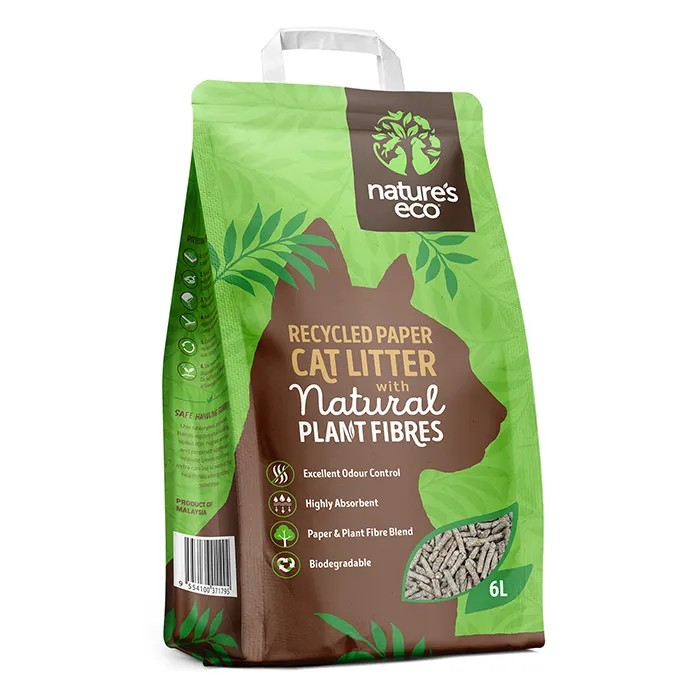
Recycled paper litter
This type of cat litter is made from recycled paper or cardboard, which is shredded, compressed, and sometimes treated with baking soda or other additives to reduce odour.
Benefits of recycled paper litter:
- Soft and lightweight – ideal for cats with sensitive paws
- Dust-free – ideal for cats with respiratory issues
- Eco-friendly and biodegradable
Downsides of recycled paper litter:
- Not very absorbent and non-clumping, so it needs to be changed frequently
- May not control odour well
- Not as long-lasting as some other litter substrates
Tofu litter
Tofu is a newer and more innovative type of cat litter, made from soybean and pea byproducts that are processed into granules or pellets.
Benefits of tofu litter:
- Soft and lightweight
- Low dust levels
- Eco-friendly, biodegradable
- Highly absorbent, clumping, and odour-controlling – it contains natural enzymes that break down the waste
Downsides of tofu litter:
- It can be more expensive
- Some cats may not like the texture or smell
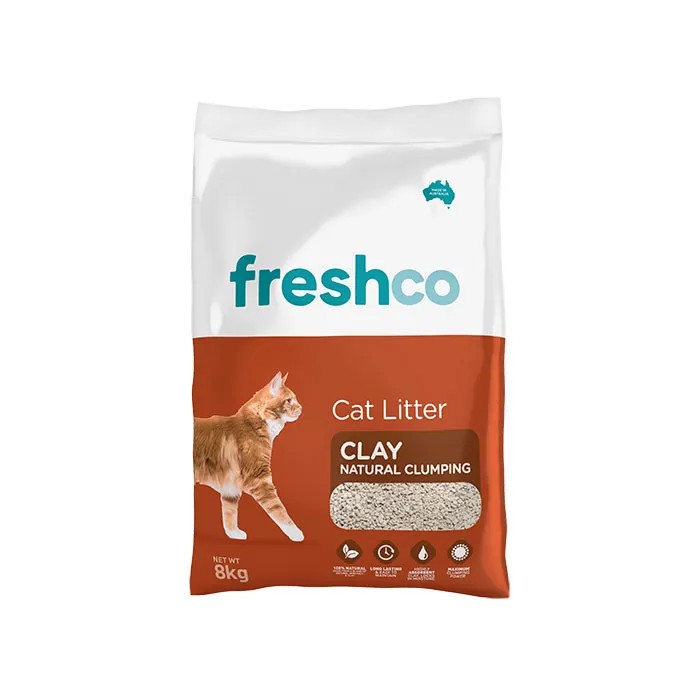
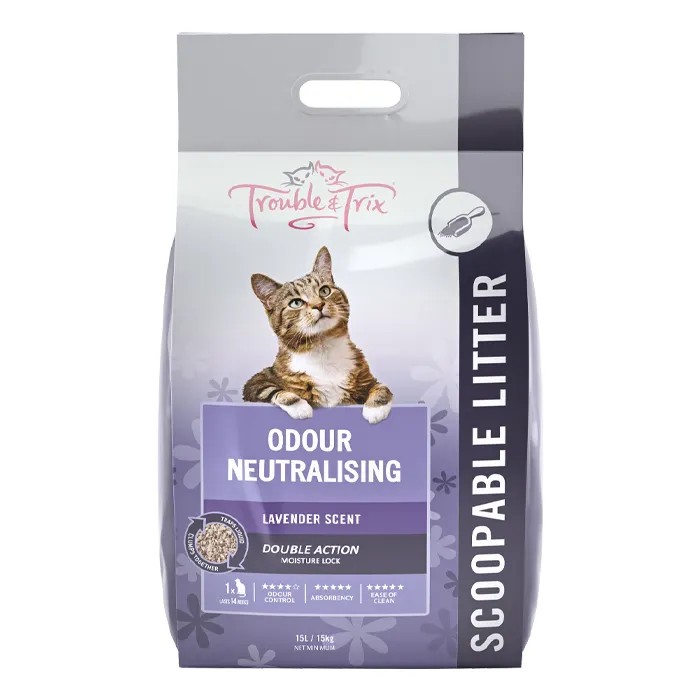
Clay litter
This is the most traditional and popular type of cat litter, made from natural clay minerals that absorb moisture and form clumps.
Benefits of clay litter:
- Highly absorbent
- Clumping
- Odour-controlling
- Relatively cheap
Downsides of clay litter:
- Can be heavy and dusty – may cause issues if your cat has respiratory problems
- Higher levels of tracking – not be ideal for your home’s cleanliness
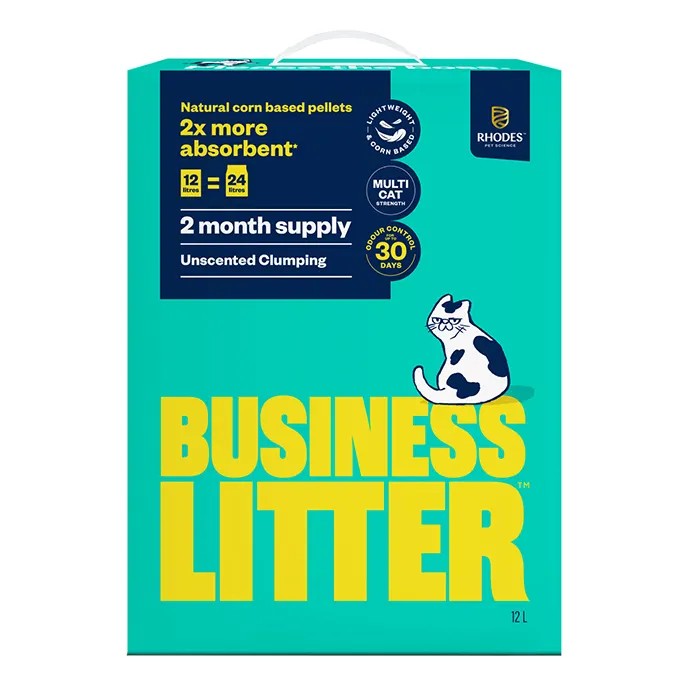
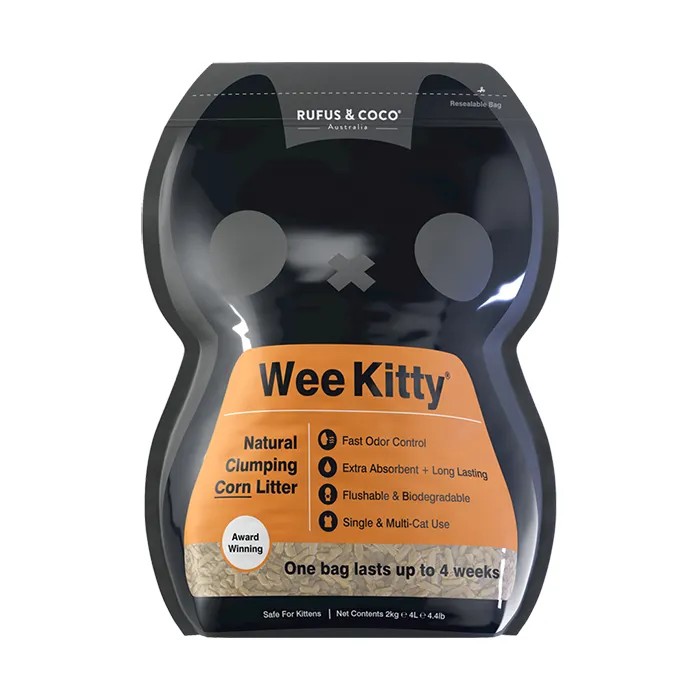

Corn litter
This type of cat litter is made from corn kernels or cobs that are ground, dried, and sometimes treated with additives to enhance their performance.
Benefits of corn litter:
- Soft and lightweight
- Low dust
- Eco-friendly and biodegradable – it decomposes naturally
- Highly absorbent, clumping, and odour-controlling – it contains natural starches and sugars that bind the waste
- Long-lasting
Downsides of corn litter:
- It can be more expensive
- Some cats may not like the texture or smell
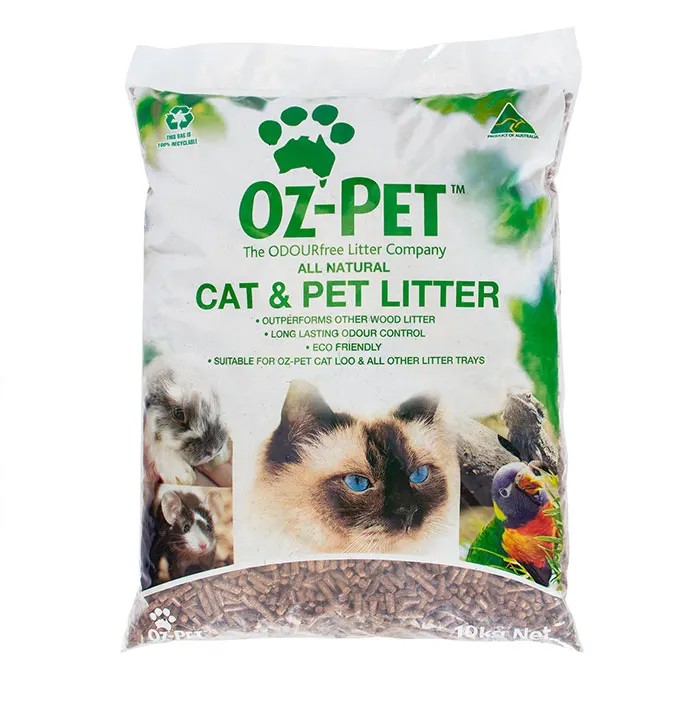

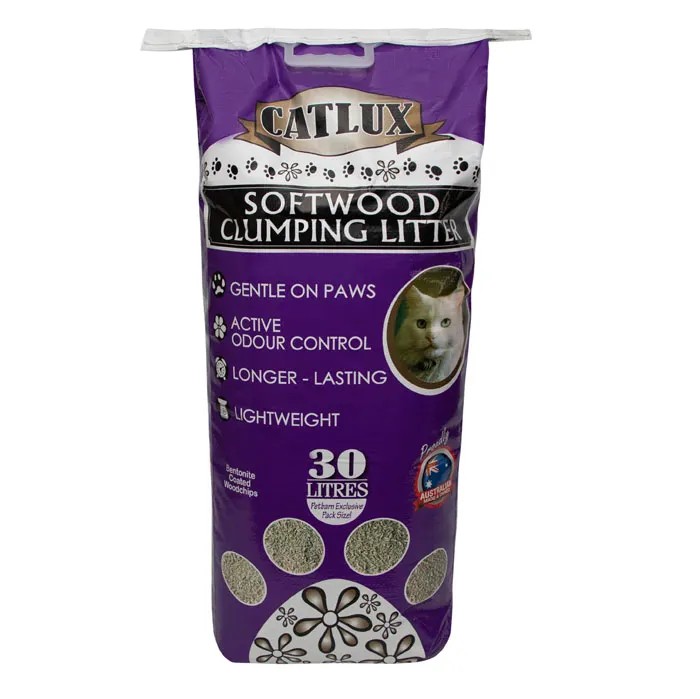
Natural and wood-based litter
This type of cat litter is made from natural materials such as bamboo, wood, pine, walnut, or coconut, which are processed into pellets, granules, or shavings.
Benefits of natural litter:
- Many are soft and lightweight
- Low dust
- Eco-friendly, biodegradable, and compostable as it comes from renewable sources.
- Highly absorbent
- Odour-controlling – it contains natural oils and resins that neutralise the waste.
Downsides of natural litter:
- It doesn’t clump as well as some other cat litters – needs to be changed more often
- Best used with a sifting cat litter tray
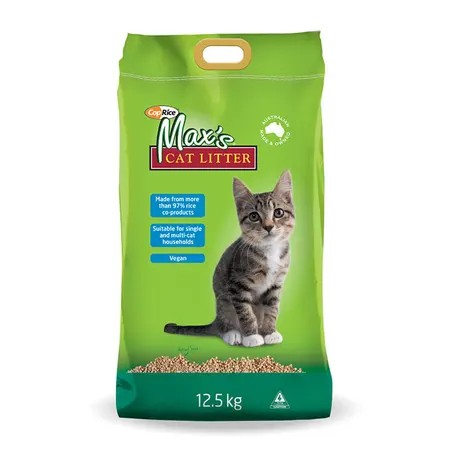

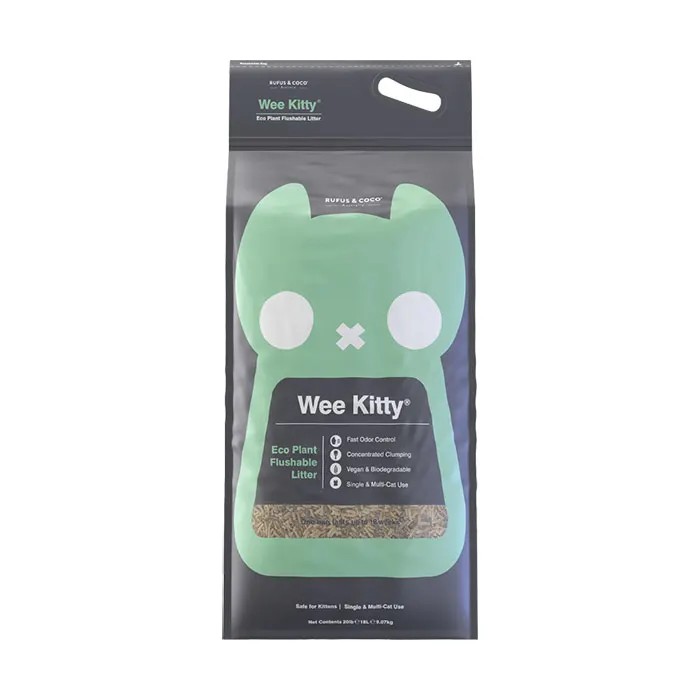
Plant fibre litter
This type of eco-friendly cat litter is made from natural plant cellulose.
Benefits of plant fibre litter:
- Eco-friendly, biodegradable, and compostable
- Highly absorbent
- Low tracking
- Natural odour control
Downsides of plant fibre litter:
- Non-clumping – needs to be changed more frequently
What is the best cat litter for me?
There is no one-size-fits-all answer to this question. The best cat litter for you depends on your personal preference, budget, lifestyle, and your cat’s personality, health, and behaviour.
You may need to try different types and brands of cat litter until you find the one that works best for you and your cat. Don’t forget about our Litter Lovers Guarantee while you’re searching for the perfect litter.
Not sure where to start with litter? Take our Cat Litter Finder quiz or ask the friendly staff members at your local Petbarn store for some recommendations.
Frequently asked questions about cat litter
How do you teach a cat/ kitten to use a litter tray?
Kittens and cats usually take to using a litter tray well if they’re introduced to it properly. Read our article on how to toilet train a kitten in 5 easy steps.
How do you clean kitty litter?
Cleaning the litter box should be part of your daily routine. No matter what type of litter you use, you’ll need to remove solid waste (faeces and, if it’s a clumping litter, clumps) daily. Use a litter scoop to remove it then dispose of it. If you have a non-clumping litter, remove any wet or soiled litter as well.
Alternatively, consider using a smart litter box which will automatically clean the litter every time your cat uses it.
How do I get my cat used to their new litter?
Litter changes need to be made gradually. Read our article on how to seamlessly transition your cat to a new type of litter.
Why is my cat not using their litter tray?
There are many reasons why a cat might be toileting outside of their litter tray, ranging from something as simple as not liking the litter substrate to more serious issues like stress or medical issues. If your cat is toileting outside the litter tray, consult your veterinarian to rule out potential health-related causes before looking at stress sources (e.g. number of litter trays available) or litter substrates.
How much cat litter should you be using per month?
There is no right answer to this question as it’s highly variable and will depend on:
- The number of cats and litter trays you have
- How frequently your cat goes to the toilet
- The type of litter you use
- The depth of litter your cat prefers
If you’re looking for cat litters that last longer, try clumping and highly absorbent cat litters which are usually more efficient with less wastage than non-clumping litters.
How much litter should you put in the litter tray?
The best litter depth depends on your cat’s preferences. Some cats like to dig and would prefer a more litter, and others are happy with a shallower layer. Make sure there is enough litter in the tray for your cat to cover their faeces.
How do you stop cats from making a mess around their litter tray?
There are a few ways to reduce the amount of mess your cat makes with their litter:
- Try a high-backed or hooded litter tray
- Use a low-tracking cat litter
- Use a litter mat


